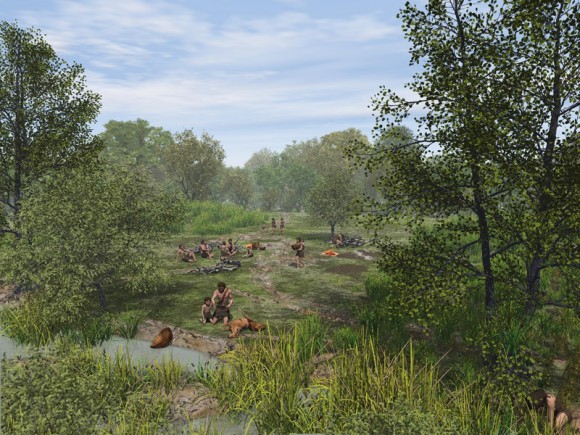Mesolithic activity adjacent to a silted up stream channel in a forest clearing.
Mesolithic location
Between the end of the last Ice Age at 9,000 BC and the introduction of agriculture at around 4,000 BC, the inhabitants of the Heathrow landscape lived a mobile life, existing by hunting animals and gathering wild plants. The landscape for much of this period would have been heavily wooded, and it is likely that people lived in small family groups. From time to time during the year, these families would have met to exchange news, celebrate marriages and commemorate deaths. Negotiating agreements about access to the resources of the woodland and the Colne floodplain would have been an important element of these meetings.
We believe that a cluster of shallow pits containing burnt flint dated to the 8th to 6th millennia BC marks the location of one of these meeting places on the gravel terrace. The pits are located adjacent to a silted-up stream channel, a boggy area devoid of trees which formed a small, natural clearing in the forest canopy. We do not know exactly what activities led to the digging of the pits, but the burnt flints found in them suggest they may have been used for boiling meat for communal feasting. The waste bone and burnt flint from repeated visits would have accumulated to form a low rubbish mound or midden over time, lending the location an important historical meaning for the family groups who met there.
When we come to consider the construction of the Stanwell cursus in the fourth millennium BC, we will see that it incorporated the location of the Mesolithic burnt flint pits, and discover how the residual meaning attached to that location was transformed into something new.
In addition to the burnt flint pits on the gravel terrace were a group of stakeholes found at Bedfont Court on the river Colne floodplain, dated to c 6,000 BC, indicating that Mesolithic activity was widespread across a range of local environments.

